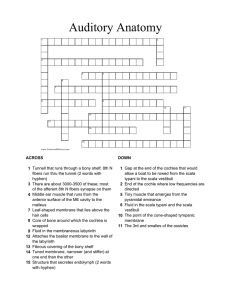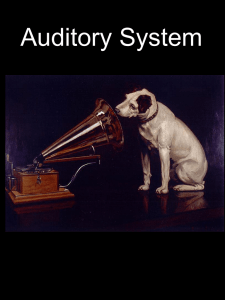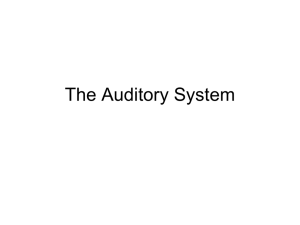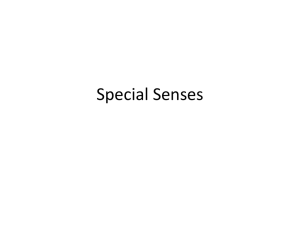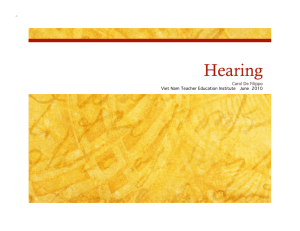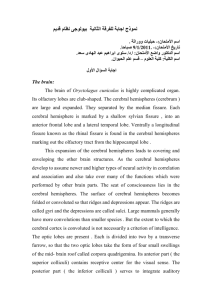Sensory systems: III. Auditory
advertisement
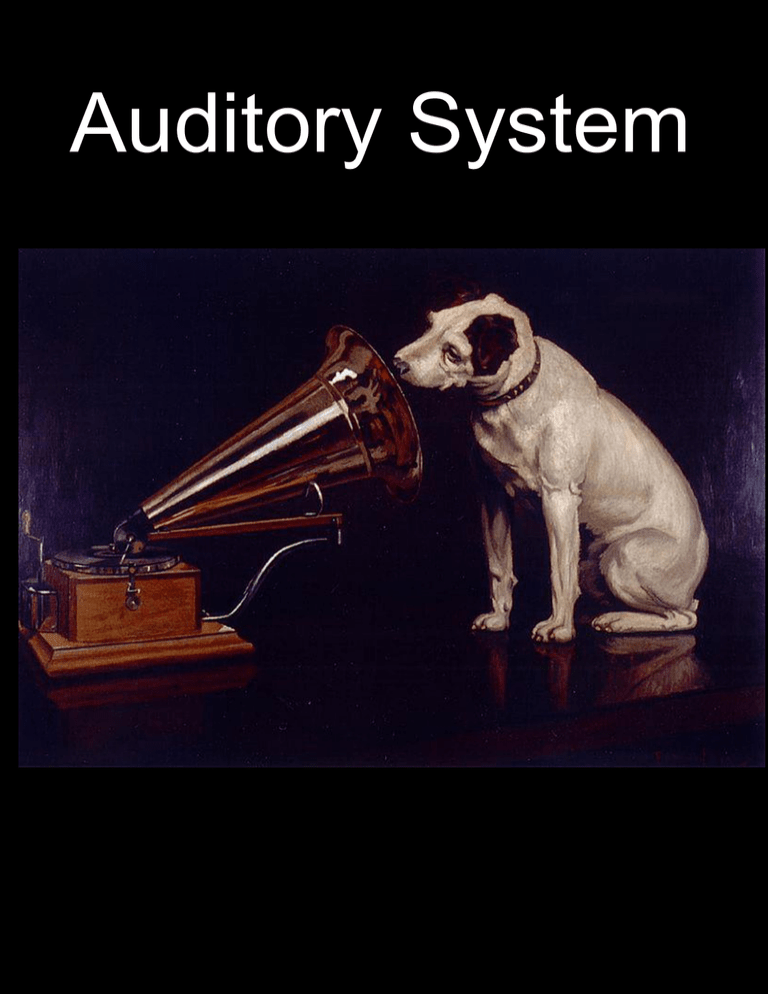
Auditory System Auditory System Adequate Stimulus for the auditory system is sound What is sound? Two components of sound displacement component movement of molecules pressure component alternating compression and rarefaction Human ears are sensitive only to the pressure component, and only between 20 Hz and 20 kHz Sound Animation courtesy of Dr. Dan Russell, Kettering University Sound Animation courtesy of Dr. Dan Russell, Kettering University Outer ear Pinna or auricle Auditory canal or ear canal Tympanic membrane or eardrum Middle ear Ossicles Malleus or hammer Incus or anvil Stapes or stirrup http://www.youtube.com/watch?v= dyenMluFaUw&feature=player_de tailpage Latex-filled cochlea. Scala tympani and scala vestibuli shown in red; scala media in dark blue. Scala tympani and scala vestibuli are filled with perilymph; scala media is filled with endolymph. Viewed in cross section, the cochlea contains three small parallel chambers. These chambers, the scalae, are separated by Reissner’s membrane and the basilar membrane. The organ of Corti contains the auditory receptors; it sits upon the basilar membrane and is covered by the tectorial membrane. http://www.youtube.com/watch?v=1 VmwHiRTdVc&feature=player_deta ilpage http://www.youtube.com/watch? v=1JE8WduJKV4&feature=play er_detailpage Place theory: Pitch perception based on PLACE of greatest displacement of basilar membrane and thus, WHICH spiral ganglion cells are most active. Rate theory: Pitch perception based on the RATE of action potentials in spiral ganglion cells. Speed of sound ~ 335 m/sec, Interaural distance (I.D) ~ .2 m Therefore, maximum difference in time of arrival at the two ears is .2 m/335 m/sec, or about 6 msec. Because shadows are cast only when wavelength is less than the size of the object casting the shadow, intensity differences are useful when wavelengths are less than the I.D. (~.2 m; frequency greater than ~ 1,700 Hz). Differences in time of arrival at the two ears Is unambiguous only when wavelengths are greater than 1/2 the I.D. (~.1 m; frequency less than about 3,400 Hz). Vertical sound localization based on reflections from the pinna. Summary of Sound Localization Three mechanisms: 1. Intensity differences: high frequencies 2. Interaural delay: sudden onset and low frequencies 3. Spectral cues: effect of reflection by pinna on sound spectrum Because sounds are complex, consisting of many frequencies, all three mechanisms are typically used simultaneously. shepard illusion Estimating Distance to a Sound Source 1. Sound intensity Spherical spreading of sound energy 2. Spectral properties Atmospheric attenuation of high frequencies 3. Echoes Greater number of echoes with distance Vestibular System http://www.sumanasinc.com/webconte nt/animations/content/vestibular.html Vestibular Nystagmus The macula of the utricle is oriented horizontally. The macula of the saccule is oriented vertically.
